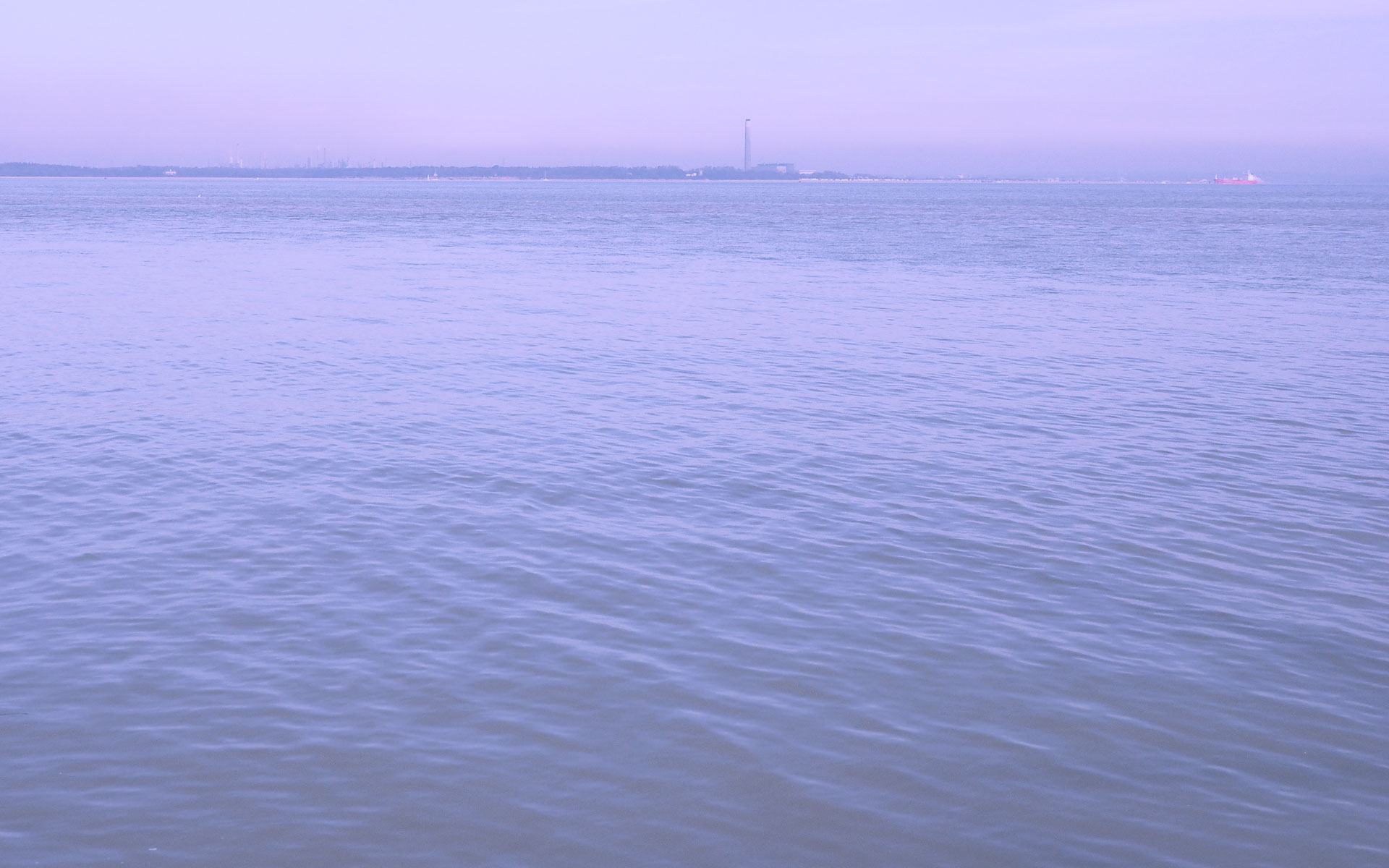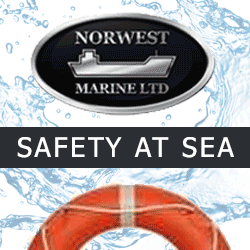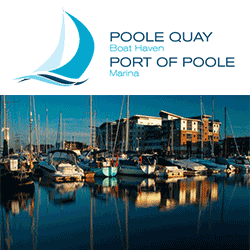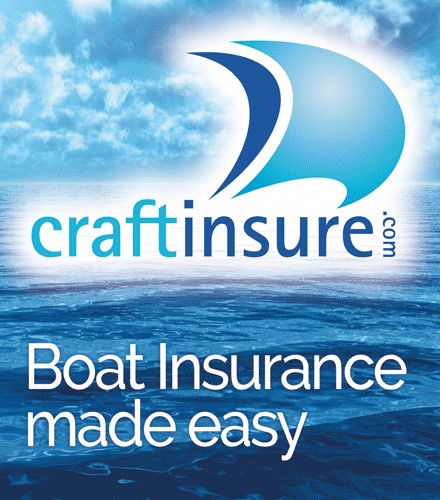Solent Racing
A few people claim to dislike racing in the Solent, because it's such a tricky place. It's true that it has strong tides, complex wind patterns, lots of leisure and commercial traffic, choppy water, and ever-changing conditions - but, for many sailors, it's the complexity that makes Solent racing such a rewarding challenge.
Windward-leeward courses set in areas of no tide and with steady winds may create a 'fairer' race course but they can become repetitive and limited in their challenge. Boat speed and tactics are highlighted but strategy, navigation, and boat handling get much more of a test around Solent courses. The ideal, of course, is to enjoy and learn from both.
Fortunately, the Solent offers plenty of locations that allow a variety of courses, even windward-leeward courses in areas that enjoy some tidal shelter. Consequently, this wonderful, sheltered area is home to a rich mixture of events, including racing for dinghies, small keelboats, cruiser- racers, and handicap and level-racing for larger racing yachts. For example, most racing from Cowes - and there is a huge amount of it in all types of boats - takes place in the central Solent but courses can also be set in the eastern and western Solent, depending on conditions. The Hill Head Plateau, just to the east of the Brambles Bank, is a favourite place for race officers to set windward-leeward courses as it benefits from shallow water for easy mark laying and the tidal shadow of the bank to its west.
Sometimes, though, race officers forget that there are other areas in the central Solent that can be even better for windward-leeward courses in some combinations of wind and tide. The area inshore and to the northwest of the Thorn Channel, and the area to the east of Osborne Bay under the Isle of Wight shore, can both be good alternatives, as can close under the mainland shore, inshore of the north channel around the Brambles. In this section of Cowes Online you'll find some general information on Solent racing, including types of courses, how racing is organised, getting involved, finding crew, and preparing for racing.
Types of Racing
Many people think of the Solent as mainly suitable for day racing keelboats and cruiser-racers rather than dinghy racing. In fact, there is plenty of opportunity for dinghy racing despite the tidal rates in much of the area, which are not ideal for small boat racing.
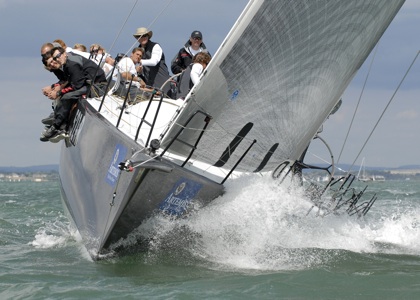
Dinghies
The most popular area for dinghy racing is just outside the Solent, at Hayling Island Sailing Club. Tidal conditions in Hayling Bay are easier than in the Solent and traffic near the racing areas is considerably less.
Within the Solent, however, there is still plenty of dinghy racing. Just west of Cowes is Gurnard Sailing Club which is the main dinghy club on the Isle of Wight and which has a great cadet programme for young members. Elsewhere, there is dinghy racing out of clubs in Lymington and Yarmouth, the Hamble River, Southampton Water, the area between Hill Head and Stokes Bay, which has three dinghy clubs in close proximity, and at Wootton on the Isle of Wight.
Small keelboats
The small keelboat classes are, for many people, the heart of Solent racing. Classes which race most weekends throughout the season include the classic Daring class, Dragons, Etchells, Flying Fifteens, Sonars and X One Designs. All these fleets have class starts in Cowes Week with the XODs, J70s and RS Elites being the largest classes in the week.
Cruiser-racing and big boat racing
If you're into yacht racing there really is plenty of choice with most Solent yacht clubs running their own evening race series plus summer weekend race series. Then there is the racing run by JOG and RORC. JOG - the Junior Offshore Group - runs both an inshore and offshore series for yachts racing under IRC with both series proving very popular. RORC - the Royal Ocean Racing Club - organises a series of offshore races from Cowes, which count towards the season's championship.
For those who prefer yacht racing on windward-leeward courses, there are ample opportunities for that too. And, if you prefer racing classic yachts even that is catered for, with The Metre & Classic Keelboat Regatta and British Classic Week.
On the race course
Even if you are an expert racer and a Solent regular it is really important to remind yourself of the basics well before heading out for the start. These include the type and location of the course, the starting sequence and race signals, and the other important information in the Notice of Race and Sailing Instructions.
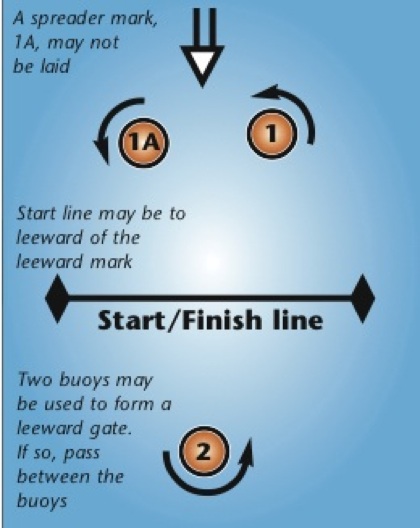
Types of course
When racing in the Solent the two most usual types of courses you'll encounter are windward-leeward courses from a committee boat start line or round-the-cans courses, usually from one of the clubs' shore lines or occasionally from a committee boat start. A committee-boat start can be set up in several locations in and around the central Solent but the most used location is on the Hill Head Plateau to the north of the main channel and east of the Brambles Bank. On busy weekends several courses may be set in this area so it is important to find out the approximate location of the committee boat before heading out. A windward-leeward course may have the start line between the windward and leeward marks, as above, or to leeward of the leeward mark. Also, there may be a leeward gate rather than a single mark.
Starting sequence
The Racing Rules of Sailing standard start sequence is often used, especially for racing on windward-leeward courses.
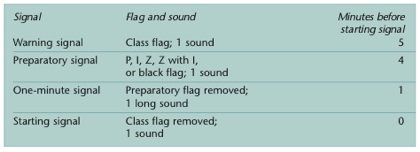
The standard sequence (RRS 26) can be changed in the Sailing Instructions (SIs) and for shore line starts from Cowes, for example, it may be changed to give a longer period between the Warning and Preparatory signals. In these cases the Warning signal is given 10 minutes before the start, with the Preparatory signal hoisted at 5 minutes before the start, and lowered at 1 minute before the start.
Racing rules
All racers should familiarise themselves with the latest Racing Rules of Sailing (RRS) 2021-2024 . They are revised and published every four years by the International Sailing Federation and a copy of the current edition of the RRS, highlighted to show changes, can be downloaded from www.sailing.org/racingrules.php .
Make sure that you read and understand the rules - it will help keep you out of trouble and give you an advantage on the race course.
Signals
Racing is governed by the use of flag signals, often with accompanying sound signals. The flag is always the primary system; if the sound signal fails it is disregarded.
Visual signals - flags or shapes - are used to control races and the attention of competitors is drawn to the visual signals by sound signals. When a visual signal is displayed over a class flag, the signal applies only to that class.
Race preparation, crew, and equipment
You may think that when you line up to start that you've got as good a chance as most of the fleet for a good place in the race. You'd be wrong! Most races are won before the start thanks to the work the skipper and crew put in to prepare themselves and the boat to do well on the race course.
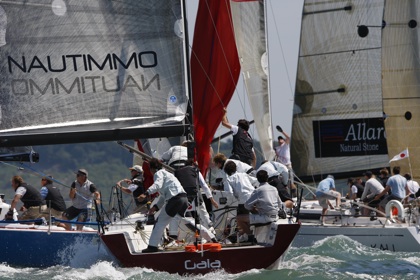
Paul Wyeth
Some of that preparation may begin months or years beforehand in preparing the boat so it has the speed and reliability to win, and preparing the crew so that they can handle the boat efficiently in all conditions and circumstances.
Other preparation takes place just before the race when the skipper and crew learn the Sailing Instructions (SIs), check the weather and tide, arrive at the course early, and make the strategic decisions.
Getting crew
Having a good crew is always important and it often takes weeks or months to develop a crew's skills and ability to work together. Finding crew can be difficult - although the more successful you are on the race course the easier it is!
A good place to start is at the local yacht clubs in your area. Post a note on their message boards and websites, and look around for online forums such as www.ybw.com/forums , www.crewseekers.net and www.sailingnetworks.com/crew/available_all . The bigger events, such as the and Cowes Week, have forums on their websites where you can advertise for crew and crew can advertise for a boat.
Once you've found a crew, make sure you sail, and preferably race, with them before the big event. Training should cover the boat layout and its gear, safety procedures, and boat handling in all the important manoeuvres and sail changes.
Skipper's check list
Your actual check list will depend on the type of boat, length of race, and course location but for a typical Solent race make sure you consider:
• Have sufficient crew, all the sails you'll need, and with all the gear in working order, including safety equipment, and get afloat well ahead of start time with plenty of time to sail to the course area.
• If you keep your boat afloat, has the bottom been scrubbed within the last two weeks? It's amazing how many boats you see racing which have dirty hulls.
• Race information - Make sure you have a copy of the Sailing Instructions (SIs), an up-to-date racing chart of the area (Solent buoys may change position and/or name from one year to the next so get a 2021 racing chart now), and the times of high water for the day, with a good tidal stream chart for the area - the more detailed the better.
• Bottled water and something to snack on, and the right sailing clothing for the conditions. Don’t forget a hat and sunscreen.
• Watch the weather trends for 3-5 days ahead of the event, and start studying it in detail in the 24 hours ahead of the event. Go afloat with an up-to-date forecast and study how any changes expected during the day may affect the strategy for the race.
Preparing for offshore racing
If you're heading offshore you'll need more food and drink, and more clothing plus more detailed weather and route planning ahead of the race. You may also need to add safety equipment, depending on the category of the race.
Offshore races can be tough on both boat and crew so make sure the boat and its equipment is in top class order and always sail with a crew that has sufficient experience among it to deal with a long race or with bad conditions.
